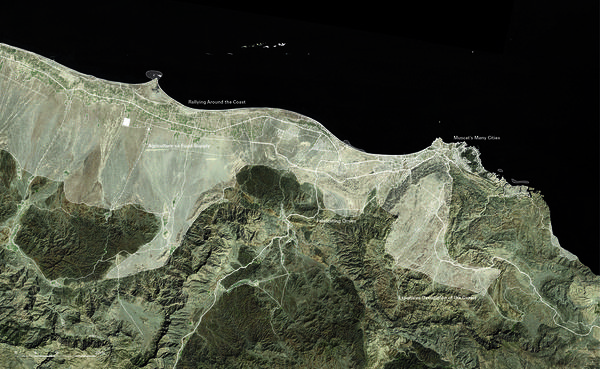Muscat and Oman - Restructuring a Desert Landscape

Starting from nominal conditions impelled by the influx of recent oil revenues, a specific urban form is coming into being in Oman today. Overwriting the articulated and restraining landscape is a vivid urbanization materializing a leap into new living conditions. The speed of urban transformation, so characteristic for the Gulf region of today, is in itself reason enough to be curious. With our research interest circling around the territory and its relation(s) to its center(s) we saw Oman and more precisely Muscat as a highly relevant place to research and understand within the context of the Gulf region and its driven urbanization.
In a culture where life was so tightly tied and dictated by the access and availability of water, we now see a society of seeming abundance, made possible by the oil extraction and tied to its capacity to subsidize the distribution of bare necessities. The tendency to diversify the economical dependency on oil and create a shift towards a multilayered economical base has directed a lot of the country’s investments in infrastructure facilitating not only the housing sector and the industrial production but also the forming tourism branch. Prevalent indicators of the development in Oman are the change of pace, and the global presence in the country. Within a time period of only 40 years Oman has gone from a country with an underdeveloped urban milieu to a country under constant enhancement stimulated by new global connections and dependencies. As seen in the case of the Nile Valley (2009) the traditional agricultural sector works as a balancing, ponderous counter part to these quick transformations, but at the same time it here allows for more internal movements and shifts, and as in all other segments of society, and of the economy, it is depended on immigrant workforce - a situation immensely different from only 30 years ago.

